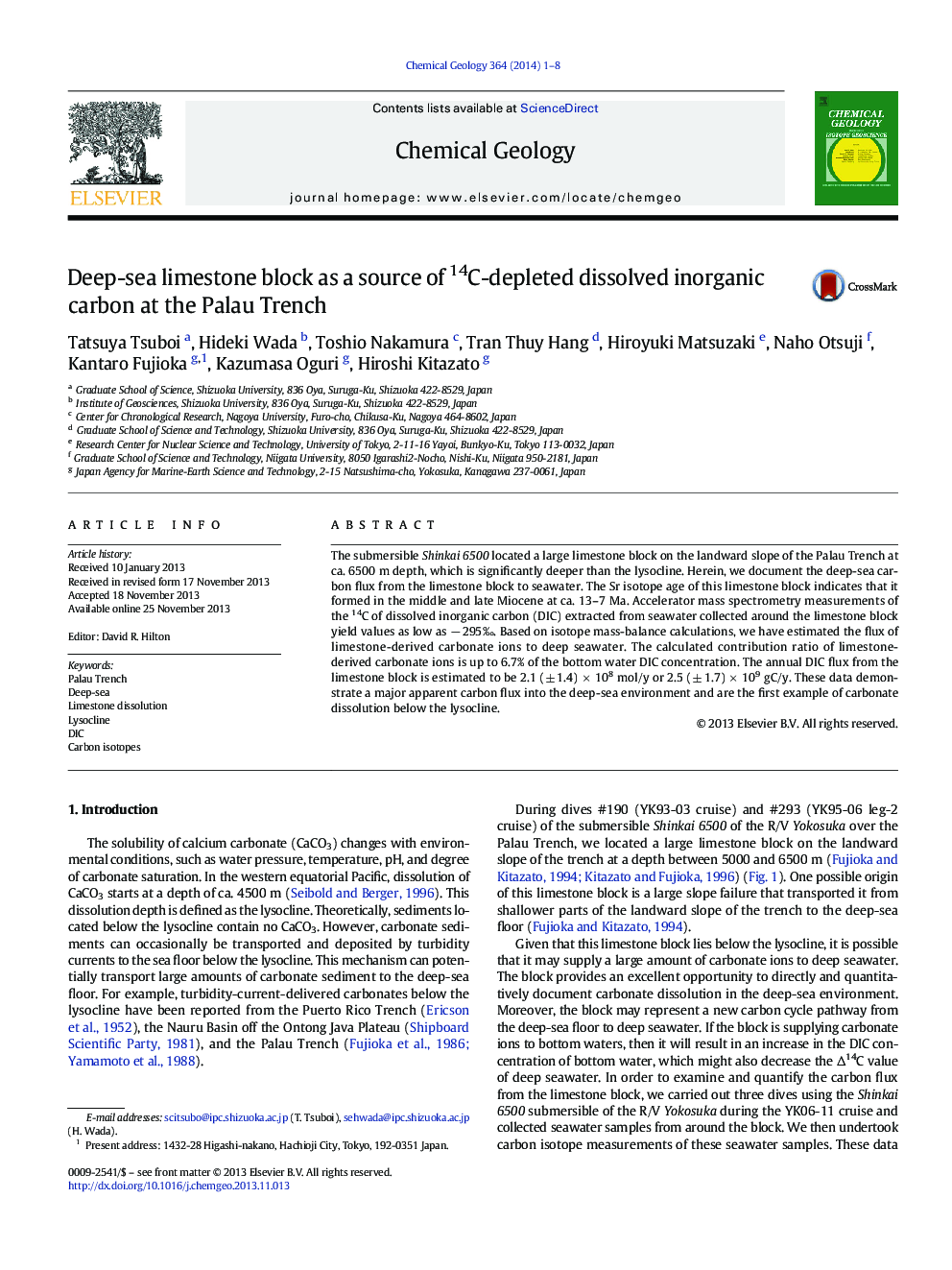| کد مقاله | کد نشریه | سال انتشار | مقاله انگلیسی | نسخه تمام متن |
|---|---|---|---|---|
| 4698878 | 1637606 | 2014 | 8 صفحه PDF | دانلود رایگان |

• The first report of the evidence for carbonate dissolution below the lysocline
• We measured the 14C content of sea water over the limestone block.
• Contribution ratio of limestone-derived carbonate ion is up to 6.7%.
• The annual DIC flux is estimated at 2.1 (± 1.4) × 108 mol/y.
• This topic includes further research of quantitative carbon cycling at deep-sea.
The submersible Shinkai 6500 located a large limestone block on the landward slope of the Palau Trench at ca. 6500 m depth, which is significantly deeper than the lysocline. Herein, we document the deep-sea carbon flux from the limestone block to seawater. The Sr isotope age of this limestone block indicates that it formed in the middle and late Miocene at ca. 13–7 Ma. Accelerator mass spectrometry measurements of the 14C of dissolved inorganic carbon (DIC) extracted from seawater collected around the limestone block yield values as low as − 295‰. Based on isotope mass-balance calculations, we have estimated the flux of limestone-derived carbonate ions to deep seawater. The calculated contribution ratio of limestone-derived carbonate ions is up to 6.7% of the bottom water DIC concentration. The annual DIC flux from the limestone block is estimated to be 2.1 (± 1.4) × 108 mol/y or 2.5 (± 1.7) × 109 gC/y. These data demonstrate a major apparent carbon flux into the deep-sea environment and are the first example of carbonate dissolution below the lysocline.
Journal: Chemical Geology - Volume 364, 22 January 2014, Pages 1–8